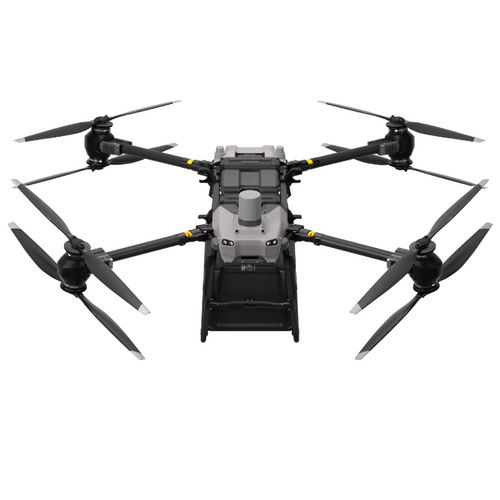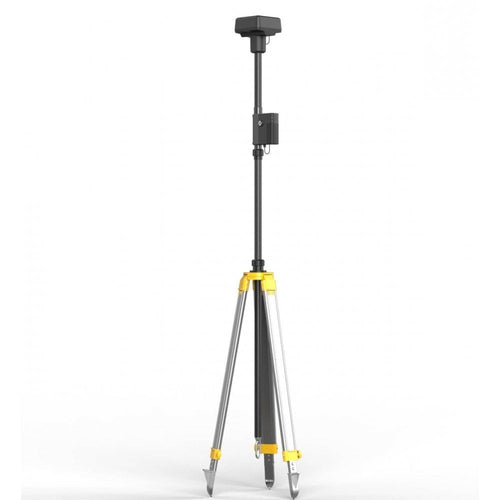
- Redundant Systems Report, published by DJI, shows how the DJI FlyCart 30 features key safety mechanisms and redundancies;
- These include flight control system sensors, dual intelligent flight batteries, image transmission links, and integrated parachute;
- These features help to maximise flight safety and reliability - especially important when deploying this heavy-lift drone while carrying cargo and potentially operating BVLOS;
- DJI says it has conducted more than 100,000 flights over three years to ensure a secure aerial transport solution.
An in-depth report shows how the DJI FlyCart 30 delivery drone has been designed with extensive system and sensor redundancies to guarantee flight safety and reliability, even in harsh environments.
And DJI says it has undertaken rigorous testing, conducting more than 100,000 flights over the last three years to develop an efficient and secure aerial transport solution.

This suite of safety features is crucial when it comes to operating such a heavy-lift drone, which has a maximum take-off weight of 95kg, is carrying delicate cargo, navigating tough environments, and is potentially operating BVLOS.
The FlyCart's redundancies and safety mechanisms include flight control system sensors, the propulsion system, dual intelligent flight batteries, image transmission links, and dual remote controllers, as well as integrated parachute and onboard ADS-B receiver.
This blog explores the key safety features and fail-safe mechanisms of this new delivery drone, based on DJI's recently-published Redundant Systems Report for the DJI FlyCart 30.
Flight Control Sensor Redundancy
Dual Inertial Measurement Units
An inertial measurement unit (IMU) measures the aircraft's real-time three-axis acceleration and angular velocity and helps calculate the aircraft's velocity, position, and attitude angle.
DJI FlyCart 30's dual IMU redundancy design ensures stable performance and high reliability.
This feature works with fault diagnosis and redundancy switching algorithms, allowing the drone to switch from the primary IMU to the backup IMU within 200 milliseconds if the primary IMU fails.
This enhances the flight stability of the drone.

Dual Barometers
A barometer determines relative altitude based on atmospheric pressure and provides precise altitude readings for the aircraft.
DJI FlyCart 30's dual barometer redundancy design allows the drone to switch from the primary barometer to the backup barometer if the primary barometer fails.
This also improves the flight stability and reliability of the drone.

RTK Antenna Redundancy
The Real-Time Kinematic (RTK) system provides positioning data for the drone to achieve stable and precise hovering and route flights in all weather conditions.
It outputs centimetre-level latitude and longitude information, altitudes, and other location information, enabling high-precision flights. In addition, RTK provides precise heading directions for the drone.
The RTK and the dual compasses act as backups to each other, greatly enhancing the flight safety and stability of the drone in complex electromagnetic environments.
DJI FlyCart 30 supports various satellite positioning systems, including GPS, GLONASS, BeiDou, and Galileo.
The dual redundant RTK antennas provide global positioning for the drone in all weathers.
The DJI FlyCart 30 can be used in conjunction with the DJI D-RTK 2 Mobile Station.
Radar + Binocular Sensing Redundancy
DJI FlyCart 30 adopts a front and rear rotating active phased array radar system and two binocular vision systems to detect the environment and location in real-time, allowing the drone to bypass obstacles effectively in complex environments.
The front and rear radar systems are pictured below.

If the forward radar sensor fails, the vision sensor will continue to function, providing multi-directional, all-weather, and 24/7 obstacle sensing and bypassing capabilities to make flights safer.
Power System Redundancy
Motor Redundancy
The propulsion system is equipped with a 4-axis coaxial design. If one motor fails, the other seven continue operating, enabling DJI FlyCart 30 to land safely.

During landing, operators can maintain essential flight control, including control over the altitude and horizontal movements, and select a safe landing point as needed.
Dual Signal Link Backup for the Throttle
The throttle signal link from the flight control system to the power system is connected to both pulse width modulation (PWM) signals and Bus 485, which serve as redundancy to each other.
This redundancy design guarantees safe and stable transmission of throttle signals between the flight control and power systems.
Dual Intelligent Flight Battery Backup
DJI FlyCart 30 can be powered by two batteries. They ensure that even if there are issues with one battery during flight, the other one can help the aircraft return and land safely.
Image Transmission Link Backup
DJI FlyCart 30 adopts a 4-antenna redundancy design, with each single antenna being capable of providing the aircraft with transmission services.
However, some performance loss may occur in areas not covered by a specific antenna.
The drone supports two frequency bands, ranging from 2.400 GHz to 2.4835 GHz and from 5.725 GHz to 5.850 GHz.
If signals in one frequency band cause interference, the drone can automatically switch to the other frequency band.
In addition, DJI FlyCart 30 allows the SDR image transmission system and the 4G enhanced image transmission system to operate concurrently, providing redundancy to maximise flight safety.
Dual Remote Controller Mode
DJI FlyCart 30 supports Dual Operator mode.
In large-range or complex operating scenarios, if the communication between one remote controller (DJI RC Plus) and the drone is interrupted, the other remote controller can take complete control of the drone.
This feature ensures uninterrupted, safe operations and flights.
Additional System Designs to Maximise Safety and Reliability
Parachute
When critical failure occurs and causes the drone to drop dramatically, DJI FlyCart 30 allows you to manually or automatically deploy the parachute, minimising the damage to people and property.

The integrated parachute, pictured above, can be deployed at a minimum altitude of 60 metres, and helps the drone to land stably at 6m/s with a full load.
The parachute has its own self-check upon startup and an independent power supply.
The drone's propellers stop rotating and the aircraft powers off before the parachute is deployed, while audio and visual alerts are triggered during deployment.
ADS-B
DJI FlyCart 30 is equipped with DJI AirSense, a technology that enhances airspace safety by providing the operator with real-time information about airplanes and helicopters within 15 km, including their position, altitude, heading, and velocity.
The risk of a close encounter with another aircraft is sent to the pilot in real-time in the DJI Pilot app, so informed decisions can be made quickly to ensure safety.
Take-off And Landing Protection
The FlyCart 30 features robust take-off and landing protection:
- Take-off: Pedestrian and obstacle detection; Propellers delayed by 6 seconds; Triggers audio and visual alerts;
- Landing: Secondary confirmation of landing; Near-ground deceleration protection.
Operating Safety
As well as its redundant systems, the DJI FlyCart 30 has a range of other safety features to maximise reliability during flight.
Weather Protection
The DJI FlyCart 30 has been engineered to withstand the elements, enabling it to handle difficult weather conditions.
It has an IP55 rating, an operational envelope of -20°C to 45°C, and a 12m/s wind-speed resistance.

FPV Module
The FlyCart 30 is equipped with a HD FPV gimbal camera.
It helps the pilot to have better visibility of the flight environment and assists the aircraft in landing and releasing cargo precisely via the AR projection feature.

Data can be viewed via DJI Pilot 2 or the DJI Delivery Hub.
Winch And Cargo Mode
DJI FlyCart 30 can transport goods in two ways: A cargo box or via a winch/crane mechanism.

When deploying the 70-litre-capacity cargo box, benefit from weight and centre-of-gravity detection to ensure balanced cargo loading for safe and stable flight.
During missions with the winch, DJI FlyCart 30 can intelligently adjust its attitude to minimise cargo swing and improve stability.
For extreme situations where hanging cargo gets trapped or tangled, there is an option to cut the winch cable, freeing the drone.
Summary
Safety is paramount when it comes to operating the DJI FlyCart 30. After all, operations with this heavy-lift delivery drone will involve the transportation of cargo and could extend to BVLOS flights.
Therefore, the DJI FlyCart 30's suite of system and sensor redundancies are designed to ensure flight safety and reliability.
Contact heliguy™ to discuss the DJI FlyCart 30. Find out how we can help you start and scale your drone operations with the DJI FlyCart 30 and how our in-house training team can help you acquire the relevant training permissions to operate it.




Leave a comment